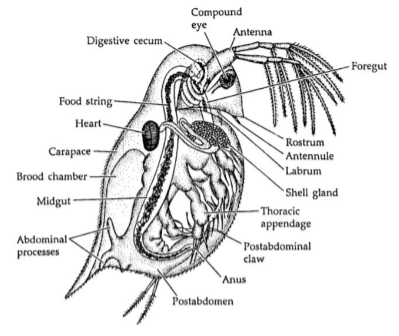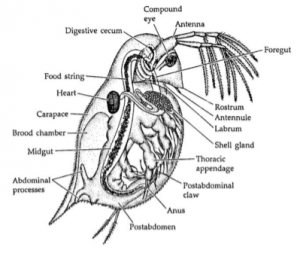Materials:
- Daphnia
- Water
- Salt water
- Water with oil
- Water with detergent
- Petri dishes with divisions
- Plastic pipettes
- Food for daphnias
- UV light
- Microscope
Activity:
Do you guys notice how many things we use on the roads end up in the water? Like salt during the winter, soap when we clean our cars and the oil from cars? All these things are on the road and whenever it rains, all of that falls into the rivers. Do you think this is healthy for the animals that live in the water? Not really, right? Today we will do an experiment to show how good or not so good those things are to the environment.
Here I have daphnias, they are small insects that live in the water. They will help us know if salt water, soapy water or water with oil is harmful to animals. We are going to place them in those types of water. What do you think will happen to them? Write your hypothesis, what you think will happen, in your notebooks. To test this, I’m going to need you guys to divide yourselves into pairs. Now each of the pairs will receive 2 dishes that are divided and the different types of water. Write under the petri dish division only one type of water. Now add a bit of that water into the dish. You will do two types of water and your partner will do the other two. Now we are giving you daphnias and a pipette. With the pipette transfer 5 daphnias to each side of the dish. And let them swim there for a while.
We have set up small microscopes for you to see how a daphnia looks like. See if you can locate the body parts of the daphnia using the diagram provided.
Now let’s see how our daphnias are doing. There is something I didn’t tell you about the different types of water, we added to the water a special food that when the daphnias eat it they glow. We are handing you now UV lights. I need you to shine the light to the side of the dish and count how many daphnias are glowing. If the daphnias are glowing then they are healthy, if the daphnias are not glowing then they are sick. Write down in your notebooks how many daphnias are glowing in each type of water. We are going to quantify all the data from the classroom in a table. Ask each pair to tell you how many daphnias are alive in their dishes and write it down in a table in front of them. Which water had the most healthy daphnias? Which one had the least? Write the results down in your notebook and compare that to your hypothesis. See how what we add into the water can have effects on the life of the animals around us?



There are no comments
Add yours